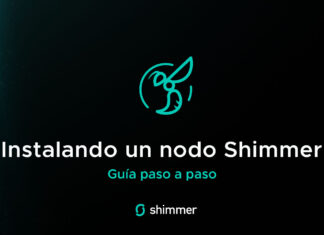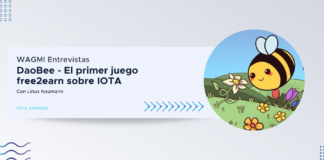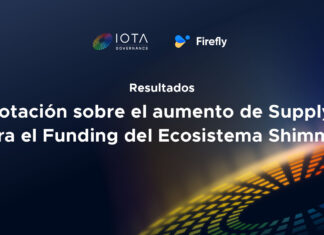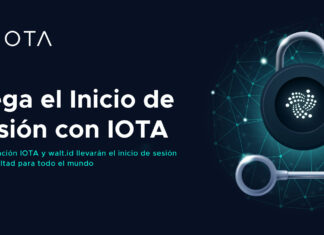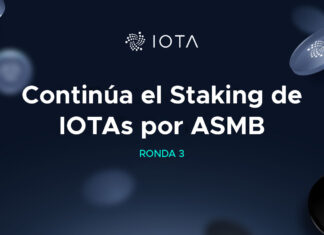Serguei Popov has a Ph.D. in math (1997, Moscow State University) and is one of IOTA cofounders, together with Sergey Ivancheglo, David Sønstebø and Dominik Schiener. He is in charge of the theoretic/conceptual side of IOTA and has been kind enough to give IOTA Hispano a little interview. We thought it would be a good idea to go crazy on Discord and prompt some devs with the «you have the chance to ask Popov one question, what would that be?» challenge. Follow up questions are a selection of what we got, plus some of our own. We hope you enjoy it and we want to thank Popov for its time and his humble way of approaching us while we were puting this together.
Daniel De Michele (Carpincho Dem)
Head of contents, IOTA Hispano
IOTA Evangelist Network member
How did you know the rest of the IOTA founders?
I became interested in cryptos around late 2013 – started reading about them, registered at bitcointalk.org (I’m mthcl there). The Nxt cryptocurrency looked very promising to me, although, unfortunately, I missed the crowdsale by just a few weeks (if I didn’t, I’d be a millionaire in December 2013, hehe). In any case, I’m a research mathematician working in probability theory, and cryptocurrency have a lot to do with Poisson processes, something that I understand (reasonably) well. So, I did some back-of-envelope calculations about the Nxt blockchain, and shared them on the forum. People said “whoa!.. can’t understand anything!.. but it looks great. Please, do write more!..” :). So I did, see the last version here: http://ledger.pitt.edu/ojs/index.php/ledger/article/view/46.
While working on the probabilistic aspects of the Nxt, I had a lot of discussions with Sergey Ivancheglo a.k.a. Come-from-Beyond, who also was (as it turned out later) the mysterious BCNext, the founder of the Nxt. When time came, Sergey and David Sønstebø (who was also an active member of the Nxt community at that time) decided to start a new project of a DAG-based fee-less cryptocurrency, which we now know as the IOTA (although this name was not there from the beginning). Well, in fact, they decided to start much more than just IOTA, but let me keep it secret, for now 🙂 Anyhow, they invited me to work on the “theoretic” / “conceptual” side of IOTA, that was in the beginning of 2015. We really did work a lot on the system’s theoretical design back then; the current design was agreed upon after many iterations and failed attempts.
As far as I remember, Dom joined the project a couple of months later in 2015; although I’m not quite sure about that, maybe I simply didn’t interact with him at that time. The funny thing is that Dom is the only one of the four founders whom I personally know (met him last September in Shanghai). He’s really a great guy.
IOTA Foundation has members all over the world. You, for instance, are in Brazil. How do you guys manage to work geographically distributed like that?
Well, you know, Skype, Slack, etc. At least now we have some “local groups” (Berlin, Tel Aviv, Campinas, New York, etc.) that can work more closely.
How many mathematicians are working at the IF as we speak and what kind of work they perform on a daily basis?
As of now, five (if we speak about pure mathematicians); but the idea is to have much more (we are still in the process of setting up an appropriate structure for the IOTA Research, though). They perform the usual kind of mathematician’s work: they stare on the whiteboard and think. 🙂 Occasionally, some good results come out of that.
Quantum computing is not that far. Is it fair to say that IOTA is the only project getting ready for this? Could you explain in a few words what differences IOTA from other blockchain based projects in terms of Quantum resistance?
As for the 1st question, I’m afraid I don’t have enough information to say anything – there are zillions of projects around. As of why IOTA is quantum-resistant, well, this is mainly due to the fact that it uses the Winternitz hash-based signature scheme, which is considered to be (reasonably) quantum-resistant.
Do you have an opinion on other DAG based projects such as Nano (ex Raiblocks) or Byteball?
In the IOTA Foundation we are of course watching quite closely other DAG-based projects; we even have (internal) research seminars on them. So, yes, I do. I only prefer not sharing these opinions publicly (unless that becomes really necessary). Let me just say that I do respect the work of other scientists involved in cryptocurrency-related projects.
We are used to read that, with IOTA the more tx the merrier but how does millions of zero value transactions impact on scalability in terms of nodes throughput?
Well, as (almost) all “the-more-the-better”-type statements, this one shouldn’t be taken literally. Of course, if there are so many transactions around that they e.g. saturate the bandwidth, that won’t make the network “merrier”. But the overall idea is the following: the “traditional” blockchain-based cryptos work smoother when there are less transactions around (smaller blocks so easier synchronization, less fees, etc.). Even if there are no transactions at all, the miners will still produce blocks. On the other hand, the IOTA’s network is collaborative: if you want to use the system, you must help the system; help others, and others will help you. There are no “miners” to take care of “simple users”, the latter must really look after themselves. Therefore, the more users collaborate, the stronger the network is. In particular, zero-value transactions still can play a useful role of “tying the Tangle together”.
Has the IF advanced on the direction of sharding core logic and database of IOTA client to allow clustered transactions on small devices?
Yes, but there is still much to be done. I prefer not entering the details here (also because this is not quite the area of my expertise).
On a 1000 TPS network scenario, will devices with slower PoW capabilities than the average create lazy tips? If so, could you explain a bit why?
In principle, yes, although they will likely be not so lazy (i.e., they will still have a decent chance to be confirmed in a reasonable time). But the plan is to move away from PoW in the future (the idea is that it will not be necessary in IoT-environment, since it’s not so easy to spam it).
Have you been conducting some research on IOTA Timestamps? If so, what kind of novel solutions would this allow?
Yes, I wrote a note about that; basically, the idea is that the tip-selecting random walk can also take care of timestamping. It must be observed, however, that that solution does not achieve the total ordering of the vertices of the graph; we just obtain some (confidence) intervals for the timestamps.
Do you see any limitation or not yet solved issue today when you think on the Tangle’s design as the accepted protocol for a futuristic Internet of things network?
We have an overall vision about that, but, of course, do not yet know all the details (also because we don’t own a Crystal Ball 🙂 ). But I’m pretty confident: we have a great team, and an even greater Community!
Can an attacker with enough computational power replicate a blockchain type 51% attack on the Tangle, resulting on double spend and a larger/bigger forked tangle?
If we’re talking about the Tangle as a mathematical model (described in those papers of mine + co-authors), then yes, the situation is the same as in the blockchain/PoW-based cryptos: an attacker which is stronger than the rest of the network can do double-spends. As for the actual IOTA network, now such thing cannot happen because of the Coo. The plan is to get rid of the Coo gradually, as the network grows. The details of how exactly this will happen are being polished now.



